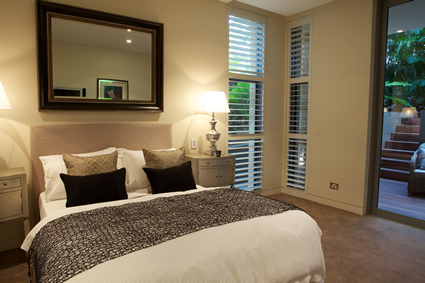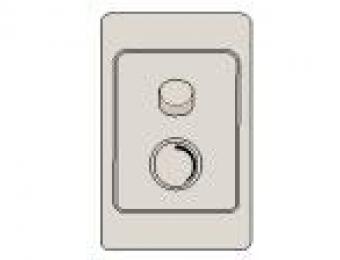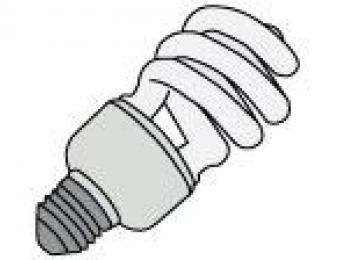
Typically, the bedroom is one of the easiest rooms to light, particularly if you only use it as a place to sleep. A basic no-frills lighting setup in the bedroom generally consists of a few low voltage light fixtures, and very little else. If more light is required (perhaps for bedside lamps), this is catered for using external fittings.
Good lighting design for bedrooms is a bit more complicated, especially if you plan to use the space as a multi-functional room where you can talk, read or watch TV. If this is the case, some of the considerations of lighting your bedroom will mirror those for other areas, like the living room.
Bedroom lighting design fundamentals
Again, lighting in a bedroom really depends on how much you use it and specifically what it's used for. Below are some basic considerations you may need to take into account when planning the lighting in your bedrooms:
- If you’re using bedside lamps, the height of your bed, bedside table and lampshade have a real impact on what lamp you should choose. Get this wrong and you'll be exposed to direct, harsh light from the bulb when lying down.
- Dresser lighting is very much task lighting, and the same rules apply here as for the bathroom mirror. The dresser area should be illuminated so that faces are lit evenly, without shadows. A row of lighting above the mirror or a light fixture on either side at eye level works well.
- If they’re recessed into the ceiling, reading lights should be placed above and behind the reader (perhaps just behind the bed head, or in a corner near a chair). This helps eliminate annoying shadows.
- Halogen globes are especially good as reading lights.
- Reading lights, especially those situated above the bed, should also be adjustable so that they can be dimmed for one person to read while the other sleeps.
- If you have more than one overhead light, they should operate on individual controls.
- Dimmers in general are a good idea in bedrooms (as they are elsewhere), because they allow you to select a level of comfort no matter what the activity.
- Small lights inside cupboards, especially with a hinged switch, can be a very convenient addition to your lighting setup.Advertisement
Children’s bedrooms
Planning lighting for childrens' bedrooms brings with it a separate set of considerations. Below are some of the things you may need to take into account:
- Childrens’ bedrooms should typically be very well lit to allow them to play comfortably.
- Roof-mounted lights are a better (and safer) option than wall-mounted lights here, and some suggest that compact fluorescent lamps (CFLs) are a better option than halogen lighting in kids’ rooms because they’re not as hot to touch.
- Children’s rooms often feature desks, which should be well lit for study and reading with a lamp (or purpose-installed roof lighting).
- Smaller children may find comfort in a night light too – these are available as discreet, low-powered plug-in wall fittings.





